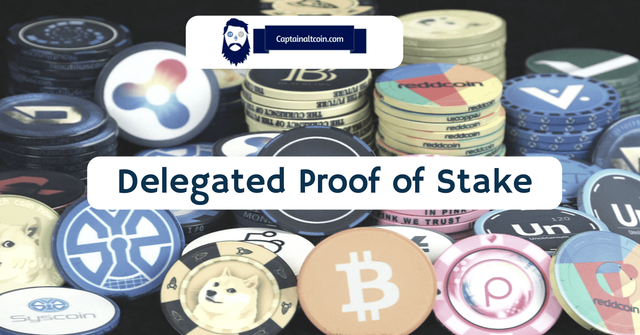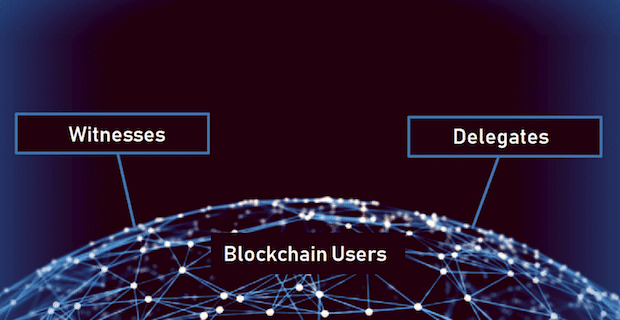Is Steem Validating DPOS?
The Proof-of-Work versus Proof-of-Stake (DPOS) has been brewing for a number of years. Many feel that POS is a faulty system worthy of being scrapped.
Of course, defenders of the alternative structure feel that is can withstand attacks much better than POW where there were a number of 51% attacks. While Bitcoin has not experienced this, there is concern that with the bulk of the mining in the hands of 4 or 5 companies, that it is very easy to get collusion.
Steem is now right in the middle of an attack. This is not only testing Steem but the entire DPOS framework. Is it a valid way to structure a blockchain?
With what we saw over the past few weeks, there are a lot of positives that support DPOS. While there are drawbacks that need addressing, I think we are seeing the system work as it was designed.

Let us start with the biggest drawback of staked voting. The fact that the exchanges were able to insert themselves into the equation is a big problem. The entire situation escalated to another level because of this. I think most of the cryptocurrency community believes this is wrong and it will be interesting to see how this works out going forward. The exchanges truly need a big slap for their actions here.
Another major issue is the fact that the voting model is such that one big player can take over the entire network. With 30 votes given to each account, with each vote having 100% weight, it is easy to see how one can gain all 20 Witnesses. This is a flaw that must be addressed. There is no clear answer on this yet it is obvious something needs to be done.
Based upon this, I would say that we are seeing validation for DPOS. The entire structure does not need to be scrapped, just altered.
The positives are that the Steem community was able to fend off the attack to get to a stalemate. Since we do not know how this will resolve itself, it is important to note that this is possibly a temporary matter. The exchanges did agree to power down which is a positive. However, the structure could be over ridden with a lot more money.
I think it is important to note that Steem has something unique that enables it to handle something like this much better than many other DPOS blockchains. The Proof of Brain might not be a perfect system but it does excel at one thing: it distributes tokens. For more than three years, people were getting tokens on a daily basis. Unlike POW which rewards only miners, the system on Steem pushes tokens into the hands of many users.
For this reason, the community aspect grew. Where Bitcoin is a holding for most people. Steem offers a "home" to many individuals. There are thousands who are on here each day enjoying the applications and interacting with others. It is one of the reasons why I believed that, in spite of the potential for SMTs, that the STEEM token still needed to be distributed via the Proof of Brain. It is a way to hopefully decentralize the holdings even further.

Source
At the core of all this is ninja-mined state of Steemit Inc. The block represents 20% of all the STEEM that is out there. While it was on the sidelines, there were few issues. Now, as we saw, when it is asserted, it causes centralization problems.
Time was going to solve this issues. Each week, the ninja-mined was constituting a smaller amount of the total. As tokens were added from the reward pool, Steemit's stake was decreasing (as a percentage of the whole). Thankfully, Steem has a decent inflation rate that puts tokens in the hands of other accounts.
Steemit Inc was also helping the process by selling off a reported 800K tokens per month. This was something that took place for a couple years. That, too, was diluting, their stake since more tokens hit the open market.
Therefore, the DPOS model, in my opinion, is not broken. There were two serious flaws in the system. The governance model chosen needs to be altered. It is obvious that, at a minimum, the number of votes each account has must be less than the number of consensus witnesses.
Another vital component is the fact that the tokens must be distributed enough to prevent one early stakeholder from controlling everything. People like to point to the fact of big money taking control from the outside by buying up the token. This is valid except for the fact that for Justin Sun, in this example, to get a stake similar to Steemit Inc's, it would moon the price. There is no way he could buy 60 million tokens on the open market.
The final line in the sand for DPOS (as well as all open source blockchains) is forking. This is where the community will be able to assert their desires.
Overall, we saw mistakes made in how things were set up and handled. However, this does not mean the system is broken. The crypto world needs to understand that throwing the baby out with the bathwater is not sensible.
If you found this article informative, please give an upvote and resteem.
Posted via Steemleo
Coming from a capitalist mindset here, I think it would behoove investors to only do business with exchanges who have agreed, contractually, to not use customers funds to vote on anything. From the exchanges perspective, if they say they don't want to vote in governance, this should be a non-issue. The market only does business with these exchanges and the others fall to the way side or change their behaviors. Seems to me like a win-win for everyone.
We're already seeing the boost that KuCoin got from announcing that they added Steem and would not use liquid balances to vote on blockchain issues.
The Pareto principal means that all tokens will distributed in a parabolic shape.
20% of the people will have 80% of the tokens.
Meaning, 80% of the people will only be there to break ties from the big voters voting.
The tokens will never be evenly distributed, and nothing can be done about it. There will always be people who are more liked, have more friends, etc...
So, any solution has to take into account this power curve
There must be a balancing of numbers (the 80%) and the power (20%)
This is also the same problem in post payout that only kinda got addressed a few HFs ago.
OP's solution does seem to address by limiting the amount of people one can vote for. Would be simple to work around, but would still limit the power of the biggest holders.
2 accounts with 10 mil sp voting for 20 witnesses seems easier to fix then 1 account with 20 mil sp voting for 20 witnesses.
Could also add another type of witness, call them community witnesses or something. Allow them to only be voted on by the 20%. 4 of these positions so the 20% could prevent a hard fork seems like a decent option.
Though both of these couod be terrible really, idk
i do not think the DPOS is the right choice and the governance war currently happening on the steem community is a proof....
Posted via Steemleo
Wut? Lol
Yes @taskmaster440 this is a very thought provoking post and it makes me think how Vitalik is observing us right now and what his feelings are about how Ethereum will make changes or Not Also ......................
"Steemit Inc was also helping the process by selling off a reported 800K tokens per month. "